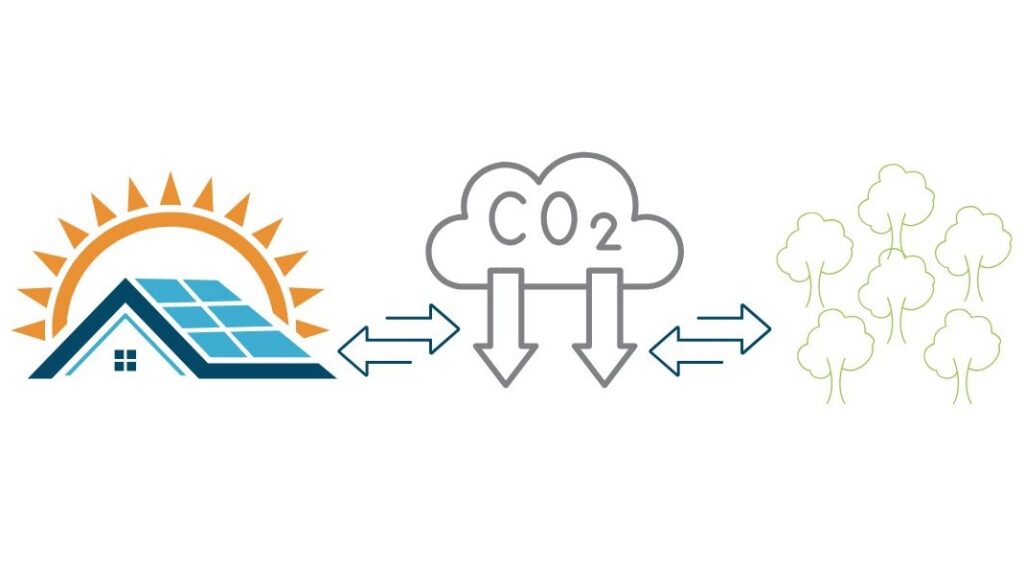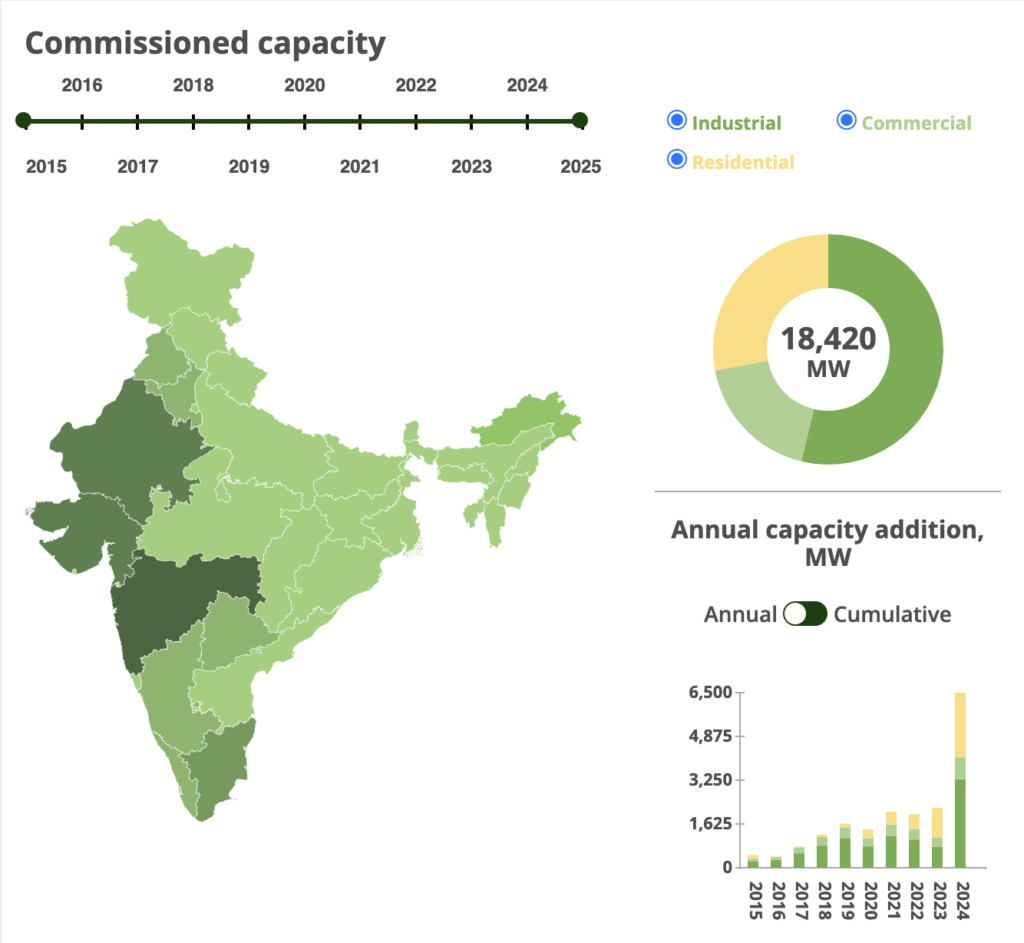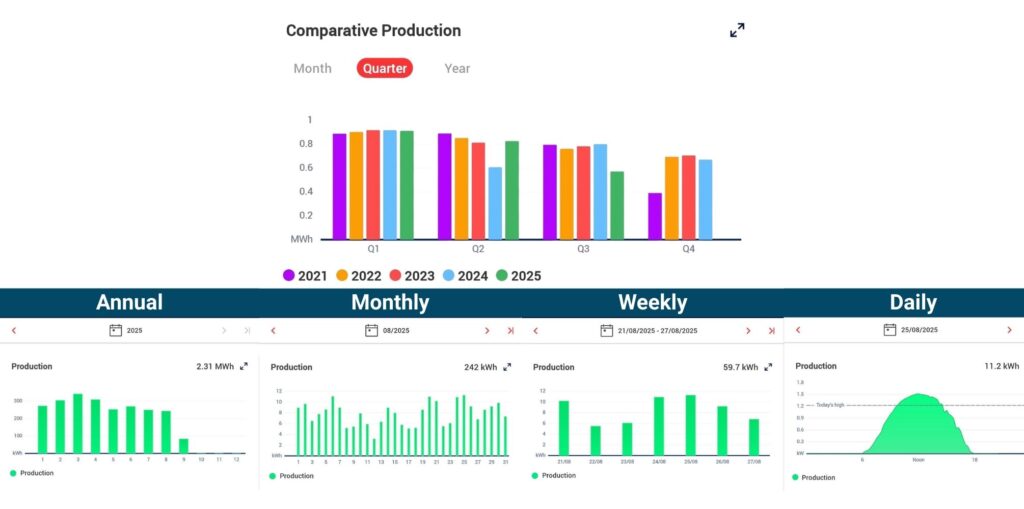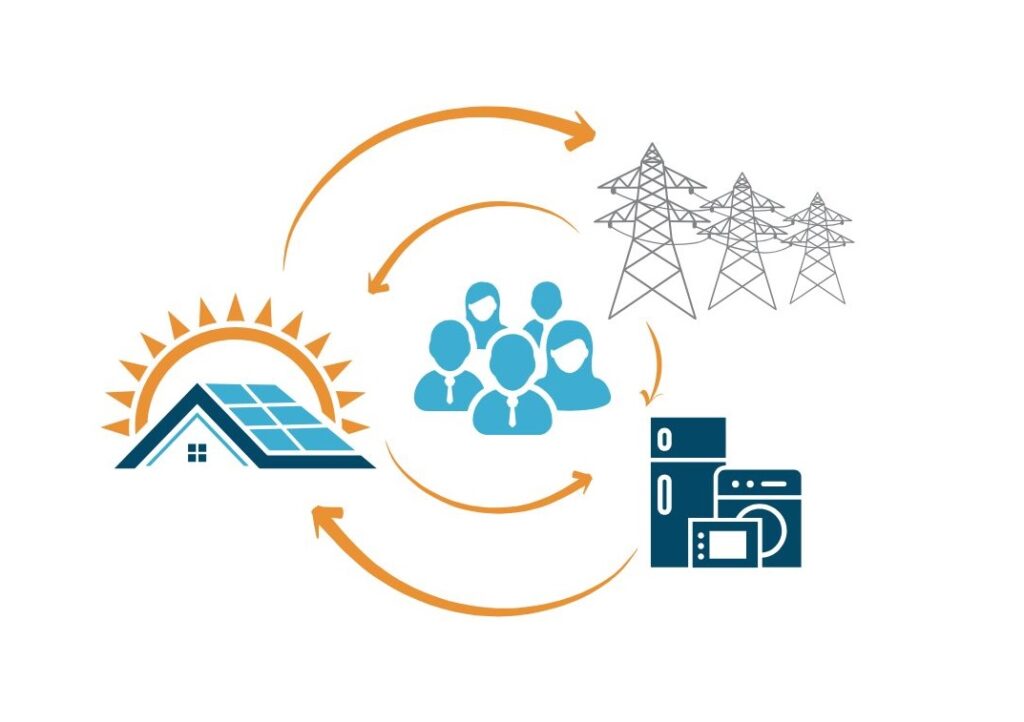Monitor, Manage, Maximize
Have you ever heard claims like “Installing rooftop solar panels avoids 1.34 tons of CO₂ every year” or “It’s like planting 250 trees”? These figures are relatable, reminding us of the real impact solar energy can have. But the big question is: Once you install solar panels, how do you make sure you’re getting the most out of them?
The answer lies in three simple steps: monitor, manage, and maximize.

Why Monitoring Matters
Rooftop solar is becoming more popular in India every year. Government schemes like the PM Surya Ghar Yojana have helped, but equally important is the growing interest among homeowners and businesses who want to save money and reduce their environmental footprint.
Figure 1 – Annual Installed Rooftop Solar in India

However, just installing solar panels is not enough. To truly benefit, you need to keep an eye on how your system is performing.
A good monitoring system helps you:
- See what is happening in real time: How much electricity your panels are producing, how much you are using, and how much you are sending back to the grid.
- Get alerts and Spot problems early: You get notified when the system is down. If something is not working right- like dust blocking your panels or a fault in the inverter- you will know before it affects your savings.
- Learn from patterns: By looking at daily or monthly trends, you can plan better and get the most out of your investment.
What Does Solar Monitoring Look Like?
Most modern solar systems offer a convenient app or web dashboard accessible from your smartphone. With these tools, you can:
- View how much electricity your solar panels have generated each day.
- Monitor the health of your panels, with many systems sending alerts if cleaning or maintenance is needed, or if there’s a technical issue.
- Track your financial savings from using solar energy versus relying only on grid electricity.
- Use real-time monitoring features to maximize your system’s efficiency and overall savings.
Figure 2 – Monitoring of solar energy generation

Some of the advanced features may include:
- Weather and temperature data.
- Forecast future solar output, integrating advanced weather modelling.
- Battery health and storage monitoring are present in systems with hybrid inverters or actual battery installations.
Cloud vs. Local Monitoring
You may hear about two types of monitoring:
- Cloud-based monitoring: Lets you check your system from anywhere on your phone or computer. Updates are automatic, and data is safely backed up.
- Local monitoring: Works on a computer connected at home, but usually doesn’t allow access when you’re away.
For most people, cloud-based is the smarter choice because of its convenience and flexibility. Local monitoring could be the preferred option if your internet connection is unreliable, but it’s less user-friendly.
The Benefits You Can Measure
When you actively monitor your rooftop solar, the results are visible:
- Lower bills: By tracking performance, you will know if your solar export and expected reduction in monthly expenses is tallying for your benefit..
- Better system health: Regular checks and timely cleaning can optimize the performance of the panels that would otherwise be lost.
- Business value: For businesses, you can track cost reductions and show real progress toward sustainability goals. Monitoring gives you accurate data to measure and report your actual impact. .
Homeowners vs. Businesses: What to Expect
For homeowners: The essentials are clear: If your goal is saving on bills, monitoring energy exported to cross check billing accuracy will suffice. However, discuss with your installer:
- Is the dashboard app or web interface easy to use and covers core data?
- Will the monitoring system allow for upgrades like battery integration in the future? Do you want notifications for cleaning needs or just passive status checks?
For businesses: More detailed monitoring is useful. For example, knowing exactly how much electricity comes from solar versus the grid can help with cost planning and sustainability reporting.
- Is the dashboard app or /web interface easy to use and covers core data?
- Will the monitoring system allow for upgrades (like battery integration in the future)?
- Do you want notifications for cleaning needs or just passive status checks?
- Are advanced diagnostic, anomaly reporting, and historical analytics available?
Keeping Your Data Safe
Monitoring systems also raise a practical question: who sees your data?During installation, your installer may have access so they can set up and test the system. But after that, the data belongs to you. You can check and adjust access permissions in your app settings.Most modern systems are secure and use strong encryption, but it is always smart to:
- Set a strong password.
- Update your app regularly.
- Limit access to only those who need it.
Everyday Tips to Maximize Your Solar
- Clean your panels regularly, especially before and after summer, dust storms or the monsoon.
- Notice seasonal changes. Cooler weather often gives better efficiency, while longer summer days give higher overall output.
- Track your usage. Adjusting when you use heavy appliances (like washing machines or air conditioners) can help you make the most of your solar power.
- Stay updated when the rooftop solar policy changes.
Conclusion: Small Steps, Big Impact
A rooftop solar system is more than just panels on your roof—it’s a tool to save money and protect the planet. But like any tool, it works best when you use it wisely. Monitoring makes you more than just a consumer – you become a prosumer, someone who both uses and produces clean energy.

By paying attention to how your system performs, you can unlock its full potential: lower bills, contribute to a cleaner air, and have a smarter, greener home or business.
In the end, the difference between a good solar investment and a great one is simple: monitor, manage, maximize.

Chandra Mohan
September 17, 2025 at 10:34 amHow does one get an alert for panel cleaning and system down?